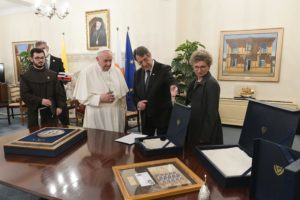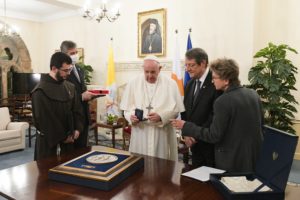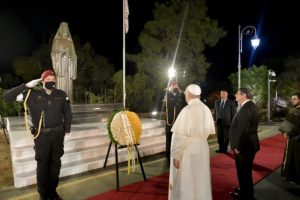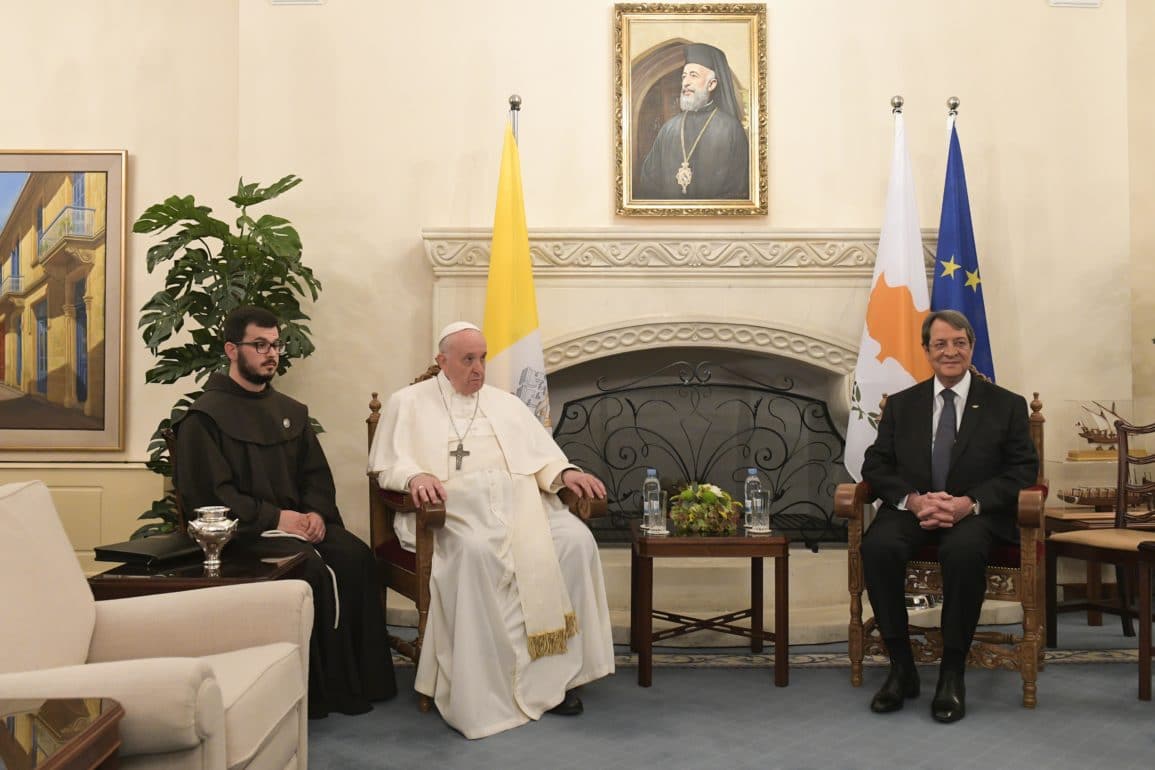After meeting the priests, men and women religious, deacons, catechists, associations, and ecclesial movements of Cyprus at the Maronite Cathedral of Our Lady of Graces in Nicosia, Pope Francis drove to the Presidential Palace in the capital, where was received by the President of the Republic of Cyprus, Nicos Anastasiades, outside the Palace, near the statue of Archbishop Makarios.

After the private meeting, the exchange of gifts and the presentation of the family took place. Finally, the President of the Republic and the Pope have gone to the Ceremony Room to meet with the authorities.
Gift of the Holy Father to the President

Nicos Anastasiades

From 1981 until his election as President of the Republic, he was a member of the House of Representatives. During his long tenure, he held various positions in Parliament: among others, he was Chairman of the Foreign Affairs Committee, Chairman of the Education Committee, and Chairman of the Inter-Parliamentary Foreign Affairs Committee. He was appointed Vice President of the House of Representatives from 1996 to 2001. On February 24, 2013, he was elected President of the Republic of Cyprus, winning the second round with a majority of 57.4%. Anastasiades is married and has two daughters.
Presidential palace
The Presidential Palace (Greek: Προεδρικό Μέγαρο, Proedrikó Mégaro; Turkish: Cumhurbaşkanlığı Sarayı) is the official residence and main workplace of the President of the Republic of Cyprus. It is located near the city center and is surrounded by a dense pine forest.
Built-in the 1930s, the palace replaced an earlier wooden building that burned down during a Greek Cypriot demonstration. It was also partially destroyed during the Greek military junta coup on July 15, 1974, and later painstakingly restored. The Presidential Palace was the former Government House, the residence of the Governor when Cyprus was under British rule (1878-1960). The structure, which still bears the British coat of arms, is characterized by its Byzantine, Gothic and Turkish elements. On the south side, there are four gargoyles, four gargoyles with human heads representing the British master builder in charge of the construction, the chief bricklayer, the chief carpenter, and an unknown worker.
For the construction of the Government House, wood was used from the Cypriot forests (eucalyptus, pine, banana, cypress, walnut) and from other areas of the British Empire, such as Burma and Canada. Following the independence of Cyprus and the departure of the British Governor in 1960, the building became the official Presidential Palace of the Republic of Cyprus.










